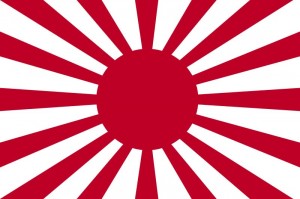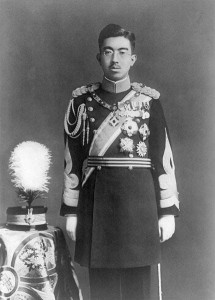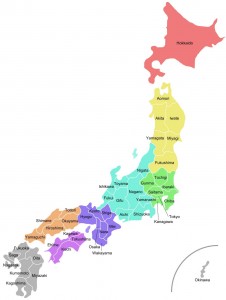 During World War II, the Imperial Japanese Army constituted the Japanese Empire’s principal ground force. Founded in 1871, the army was under the nominal command of the Emperor, although in most cases the Ministry of War and the General Staff Office controlled its actions. The army was dissolved after Japan’s defeat in 1945, when the Allies prohibited the country from re-establishing conventional armed forces. Nevertheless, a small number of soldiers fought on in remote areas until the 1970s.
During World War II, the Imperial Japanese Army constituted the Japanese Empire’s principal ground force. Founded in 1871, the army was under the nominal command of the Emperor, although in most cases the Ministry of War and the General Staff Office controlled its actions. The army was dissolved after Japan’s defeat in 1945, when the Allies prohibited the country from re-establishing conventional armed forces. Nevertheless, a small number of soldiers fought on in remote areas until the 1970s.
Background
When the United States’ entered the war in December 1941, the Imperial Japanese army could call upon around 1.7 million men, scattered between 51 divisions. Of these, 27 divisions were stationed in occupied China, with 13 more in a defensive role along the border with Mongolia. These were intended primarily as a deterrent to any potential Soviet assault. As the scale of the war increased and fighting intensified, Japanese troops were sent to an increasing range of fronts, including Hong Kong, Burma, Malaya, and the Philippines. The number of men under arms likewise increased, exceeding five million by 1945.
Supply shortages began to become a major issue as the tide of the war in the Pacific turned during 1943. Shipping losses occurred frequently, with rivalries between the army and the navy not helping matters. In addition to military supplies, medicine and food deliveries were badly affected. As a result, the air force was deprived of many otherwise serviceable aircrafts because the spare parts to fix them were not available. In fact, the majority of Japanese military deaths during the war did not come from combat, but from starvation or illness.
A Reputation for Brutality
Even before World War II itself, the Imperial Japanese Army had acquired a fearsome reputation, both for its fanatical devotion and its brutal treatment of non-combatants and prisoners, as evidenced at Nanking. After the war, well over 5,000 war crimes trials were held, with many officers and men being punished for atrocities carried out. In 1941, Major General Horii gave orders to his men telling them not to kill or loot from civilians, but these occurrences were few.
Many authorities reason that the army behaved brutally because its men had themselves been treated harshly during their enlistment. Discipline went beyond humane treatment and encompassed punishments such as excessively strenuous duties, insufficient food, and harsh beatings. In 1943, it was realized by the army’s senior commanders that this was causing poor morale among their troops. However, their directive to end such practices was widely ignored. Similarly, the Japanese concept of dying a glorious death led some commanders to insist on bayonet charges, even when this was suicidal and more suitable ammunition remained available.
Low Surrender Rates
Though conditions were harsh, the Imperial Japanese Army’s fanaticism led to an extremely low rate of surrender throughout the war. In the Battle of Saipan, for instance, out a garrison with the strength of over 30,000, only a little more than 900 men fell into enemy hands as prisoners of war. In some cases, surrender rates were even lower, such as at Tarawa, where a mere 17 troops were captured from a force 3,000 strong. Even in the much larger Battle of Okinawa, under ten percent of the Japanese army surrendered, with many men committing suicide on the battlefield after gaining imperial authorization to do so.
The United States had some success in encouraging Japanese soldiers to surrender, with most figures suggesting that about one in five surrenders were accounted for by American propaganda distributed by means of leaflet drops. The Japanese called these leaflets “unscrupulous,” and insisted that the reality of the matter was that Allied troops were merciless and cruel. They stressed that captured women would be raped by American soldiers, and that men would be tortured and killed. This was widely believed among ordinary Japanese troops and is partly responsible for incidents such as the Bataan Death March.
The Power of the Emperor
 Emperor Hirohito was, by the terms of the Meiji Constitution, placed in supreme command of all imperial armed forces. After the Imperial General Headquarters were set up in 1937, the Emperor became supreme commander of that body as well, and was therefore—at least in theory—the man who was ultimately responsible for all military decisions made in the name of the Japanese Empire.
Emperor Hirohito was, by the terms of the Meiji Constitution, placed in supreme command of all imperial armed forces. After the Imperial General Headquarters were set up in 1937, the Emperor became supreme commander of that body as well, and was therefore—at least in theory—the man who was ultimately responsible for all military decisions made in the name of the Japanese Empire.
According to the detailed descriptions provided by a number of significant sources, such as the diaries kept by high-ranking imperial advisers and politicians, much of the Emperor’s power was in fact exerted informally. There were a large number of meetings in which Hirohito discussed events with his ministers and chiefs of staff, and he is known to have taken a close interest in the conduct of the war, frequently requesting that alterations be made to military plans.
Hirohito’s Specific Orders
Although some of the Emperor’s requests were fairly general in nature, Japanese historians have also uncovered examples of more direct and specific commands, which were transmitted to commanders in the field by the Chief of Staff of the Army. These most notably included the deployment of chemical weapons. In accordance with the Emperor’s command, gas attacks were used on the Chinese in over 300 situations in 1938, while Wuhan was being invaded.
While these were relatively small-scale assaults, Hirohito is also believed to have intervened on a much larger scale during some operations. In the early months of 1942, Field Marshal Sugiyama was repeatedly pressured by the Emperor to mount an attack on Bataan and boost the numbers of his troops. The following year, the same commander was strongly criticized by Hirohito for allowing the United States forces to take the Solomon Islands, after which Sugiyama was requested to mount attacks in other locations.
After the War
Japan continued to fight even after the fall of Germany in May of 1945, and Hirohito was forced to surrender only when atomic bombs had been dropped on Hiroshima and Nagasaki in August. The replacement Japanese Constitution that was drawn up after the Allies’ victory expressly prohibited the use of force, in an attempt to head off the threat of militarism. Nevertheless, by 1947 the Public Security force, later to become the Ground Self Defense Force, was formed.
A number of members of the old Imperial Japanese Army refused to accept the legitimacy of their nation’s surrender, and continued to consider themselves as belligerents in an active war. In a few cases, on small Pacific islands, soldiers continued to hold out for almost three decades. The very last Imperial Japanese Army soldiers to surrender did so in the Philippines and Indonesia in 1974.
